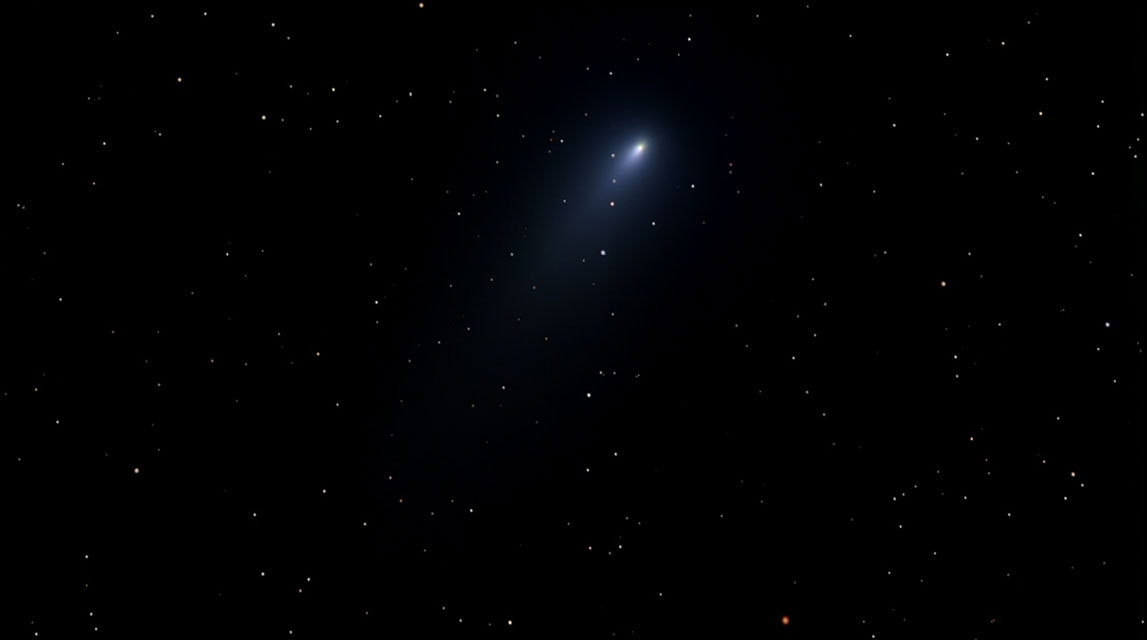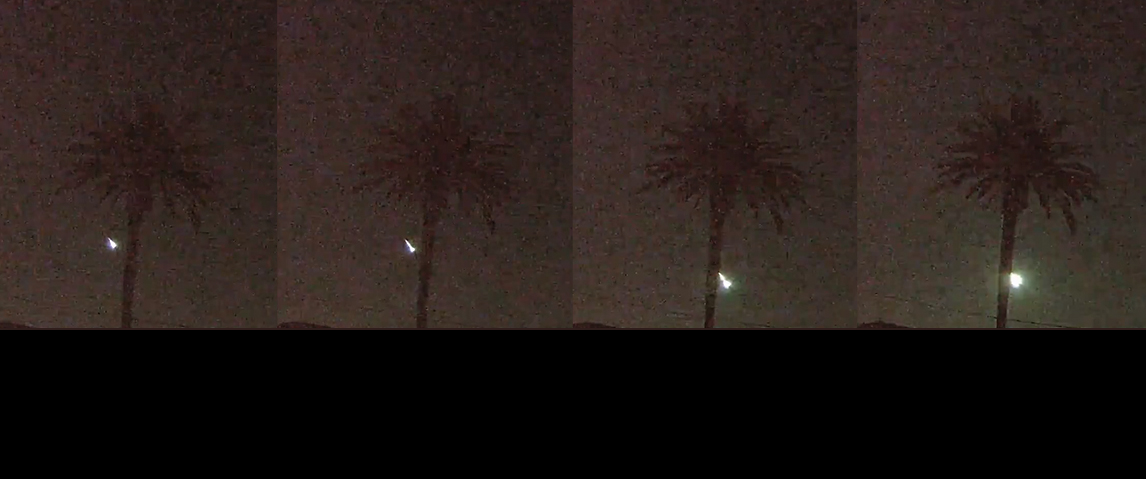
Fireball over the English Channel
The AMS and the International Meteor Organization have received 87 reports so far about of a fireball event seen above the English Channel on June, 2nd 2016 around 00:38 French Time (June 1st 2017 ~ 22:38 UT.).

The AMS and the International Meteor Organization have received 87 reports so far about of a fireball event seen above the English Channel on June, 2nd 2016 around 00:38 French Time (June 1st 2017 ~ 22:38 UT.).

During this period the moon reaches its full phase on Friday June 9th. At that time the moon is located opposite the sun and will remain above the horizon all night long. This weekend the waxing gibbous moon will set during the early morning hours allowing a couple of hours of viewing under dark skies before morning twilight arrives.

The tau Herculids (τ-Herculids) are an obscure shower produced by the remnants of comet 73P/Schwassmann-Wachmann 3. These meteors are only seen when the earth passes through one of the filaments produced by this comet during previous returns to perihelion. Mikhail Maslov has posted on the Forum of the International Meteor Organization that just such a chance exists on May 30 near 17:24 Universal Time, when the earth passes close to the debris shed by this comet in 1941.

The estimated total hourly meteor rates for evening observers this week is near 3 for those viewing from the northern hemisphere and 4 for those located south of the equator. For morning observers the estimated total hourly rates should be near 8 as seen from mid-northern latitudes (45N) and 13 as seen from tropical southern locations (25S).

During this period the moon reaches its new phase on Thursday May 25th. At that time the moon is located near the sun and is invisible at night. The estimated total hourly meteor rates for evening observers this week is near 3 for those viewing from the northern hemisphere and 4 for those located south of the equator.

The Eta Aquariids are a strong shower when viewed from the southern tropics. From the equator northward, they usually only produce medium rates of 10-30 per hour just before dawn. Here are 2 videos of the eta Aquariids 2017...

This weekend the waning gibbous moon will rise during the early evening hours and will make viewing meteor activity difficult as the bright moonlight will obscure all but the brighter meteors. The estimated total hourly meteor rates for evening observers this week is near 2 for those viewing from the northern hemisphere and 3 for those located south of the equator.

The estimated total hourly meteor rates for evening observers this week is near 2 for those viewing from the northern hemisphere and 3 for those located south of the equator. For morning observers the estimated total hourly rates should be near 12 as seen from mid-northern latitudes (45N) and 20 as seen from tropical southern locations (25S).

The eta Aquariids (ETA) are active between April 23 and May 20. The strongest activity is usually seen near May 7, when rates can reach 25-30 meteors per hour as seen from the tropical areas of the Earth.

During this period the moon reaches its first quarter phase on Tuesday May 2nd. At this time the half illuminated moon is located 90 degrees east of the sun and sets near 0200 local daylight saving time (LDST) as seen from mid-northern latitudes. This weekend the waxing crescent moon will interfere with meteor observations during the evening hours but will have set by the time midnight arrives. This will allow good meteor viewing conditions for the remainder of the night.

The slender moon will rise only a couple of hours before the sun plus the moonlight is only a fraction as bright as it was last week. The estimated total hourly meteor rates for evening observers this week is near 3 for those viewing from the northern hemisphere and 4 for those located south of the equator.

During this period the moon reaches its last quarter phase on Wednesday April 19th. At this time the half illuminated moon is located 90 degrees west of the sun and rises near 0200 local daylight time (LDT) as seen from mid-northern latitudes. This weekend the waning gibbous moon will interfere with meteor observations as the bright moonlight will obscure all but the brighter meteors. As the week progresses the conditions improve with each passing night as the moon's phase wanes and it rises approximately 45 minutes later with each passing night.

After three months of low rates, April ushers in two major showers (Lyrids and eta Aquariids) and a temporary upswing in meteor activity. The first of these showers is the Lyrids, which are active from April 18 through the 25th. Activity for this shower is low away from the peak night which expected to occur on Friday evening /Saturday morning April 21/22.

The AMS has received 315 reports so far about of a fireball event seen across South Carolina on Wednesday, April 12th 2017 around 8:45pm EDT (April 13th – 00:45 UT.). The fireball was seen primarily from the South Carolina area but witnesses from several states around also reported the event.

The AMS has received 525 reports so far (and counting…) about of a fireball event over seen over San Diego, CA on Monday, April 10th 2017 around 9:00pm PDT (April 11th - 04:00 UT.). The fireball was seen primarily from the San Diego area but witnesses from Los Angeles, Arizona, Nevada and New Mexico also reported the event.

For morning observers the estimated total hourly rates should be near 4 as seen from mid-northern latitudes (45N) and 6 as seen from tropical southern locations (25S). Rates are reduced during this period due to lunar interference.

During this period the moon reaches its first quarter phase on Monday April 3rd. At this time the half illuminated moon is located 90 degrees east of the sun and sets near 0300 local daylight time (LDT) as seen from mid-northern latitudes. This weekend is good for viewing meteor activity during the more productive morning hours as the moon will have set shortly after midnight. As the week progresses the window of opportunity to view under dark skies shrinks with each passing night as the moon sets later and later.

The estimated total hourly meteor rates for evening observers this week is near 3 for those viewing from the northern hemisphere and 4 for those located south of the equator. For morning observers the estimated total hourly rates should be near 7 as seen from mid-northern latitudes (45N) and 11 as seen from tropical southern locations (25S).

For morning observers the estimated total hourly rates should be near 6 as seen from mid-northern latitudes (45N) and 9 as seen from tropical southern locations (25S). Morning rates are reduced by moonlight during this period.

The estimated total hourly meteor rates for evening observers this week is near 3 for those viewing from the northern hemisphere and 5 for those located south of the equator. For morning observers the estimated total hourly rates should be near 7 as seen from mid-northern latitudes (45N) and 16 as seen from tropical southern locations (25S).

As seen from the northern hemisphere, March is the slowest month for meteor activity. There is not much to look forward to this month except for the evening fireballs that seem to peak this time of year!